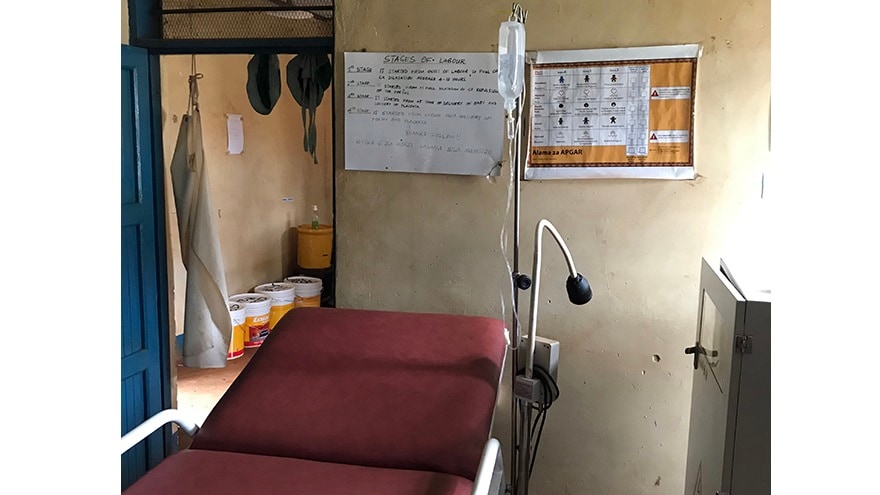Key points
From 2006 to 2019, the Maternal and Reproductive Health in Tanzania Program worked in northwestern Tanzania. By the end of the program, births taking place in health facilities had increased and maternal mortality had decreased.

Overview
The approach of the Maternal and Reproductive Health in Tanzania Program was to make maternity care more accessible and to improve the quality of the care in order to better treat or prevent life-threatening pregnancy complications.
About the Maternal and Reproductive Health in Tanzania Program:
- Operated in Tanzania's remote northwestern region of Kigoma.
- Was carried out by program partners: Government of Tanzania, Bloomberg Philanthropies, Fondation H&B Agerup, Thamini Uhai, EngenderHealth, Vital Strategies, CDC Foundation.
- CDC's Division of Reproductive Health led the program evaluation activities.
- At the end of the program in 2019, its activities were transferred to the Kigoma regional health authority.

Was the program successful?
CDC's Division of Reproductive Health conducted monitoring and evaluation activities that documented a number of program impacts, including the following:
- The proportion of births taking place in health facilities increased from 49% in 2013 to 85% in 2018.
- The maternal mortality ratio in facilities declined from 303 maternal deaths per 100,000 live births in 2013 to 174 in 2018 (a decline of 43%).
Have the successful results continued beyond the end of the program?
In partnership with CDC Foundation, through a grant from Bloomberg Philanthropies, CDC is now conducting a Sustainability Evaluation (2022 to 2025) to assess the following:
- Whether there have been any changes to the quality and availability of maternity services.
- Whether there have been any changes to health outcomes (maternal and perinatal mortality).
- The facilitators and barriers to the sustainability of the health and infrastructure improvements from the program since 2019.
This sustainability evaluation is using a variety of approaches to assess different aspects of the program's sustainability:
- Qualitative interviews with health providers, program managers, decision makers, and program partners.
- Data on facility readiness, quality of services, and pregnancy outcomes.
Program goals
From 2012 to 2019, the Maternal and Reproductive Health in Tanzania Program focused on Kigoma Region, where rates of maternal and infant death were high.
The program's partners worked in different program areas, all focused on the program's goals:
- To improve the health of women and their newborns.
- To reduce the number of deaths of mothers and newborns in the period around childbirth.

Program approach
To improve the quality of health services, especially emergency obstetric care, the Program:
- Supplied essential drugs, equipment, and supplies for emergency obstetric and neonatal care.
- Improved the skills of health care providers by providing training and supportive supervision in emergency obstetric and neonatal care.

To make maternity care more accessible, including emergency obstetric care, the program:
- Upgraded health facilities so that more facilities could provide emergency obstetric care.
- Encouraged community health workers and leaders to conduct outreach activities to support greater use of health services.
To improve access to contraception to enable women and their families to prevent unwanted pregnancies, the program:
- Trained health care staff in contraceptive methods and counseling.
- Equipped health facilities to provide the full range of contraceptive methods.
- Integrated family planning service delivery into other community events.
How CDC evaluated the program's activities and results
Beginning in 2013, CDC designed and conducted Monitoring and Evaluation (M&E) activities to assess the Maternal and Reproductive Health program's contributions to reducing maternal and neonatal deaths and poor health outcomes in Kigoma.

There were four objectives for these activities:
- To document changes in the availability of emergency obstetric and neonatal care and the capacity of health care facilities to provide high quality care.
- Evaluation tool used: Health Facility Assessments.
- Evaluation tool used: Health Facility Assessments.
- To examine changes in how much the women used the maternal and neonatal care and contraceptive services at the health facilities.
- Evaluation tools used: Reproductive Health Surveys, Pregnancy Outcomes Monitoring.
- Evaluation tools used: Reproductive Health Surveys, Pregnancy Outcomes Monitoring.
- To assess changes in the infrastructure and maternity care services at the health facilities.
- Evaluation tool used: Health Facility Assessments.
- Evaluation tool used: Health Facility Assessments.
- To assess changes in the rates of pregnancy-related death and severe illness among mothers and newborns.
- Evaluation tool used: Pregnancy Outcomes Monitoring.
- Evaluation tool used: Pregnancy Outcomes Monitoring.
